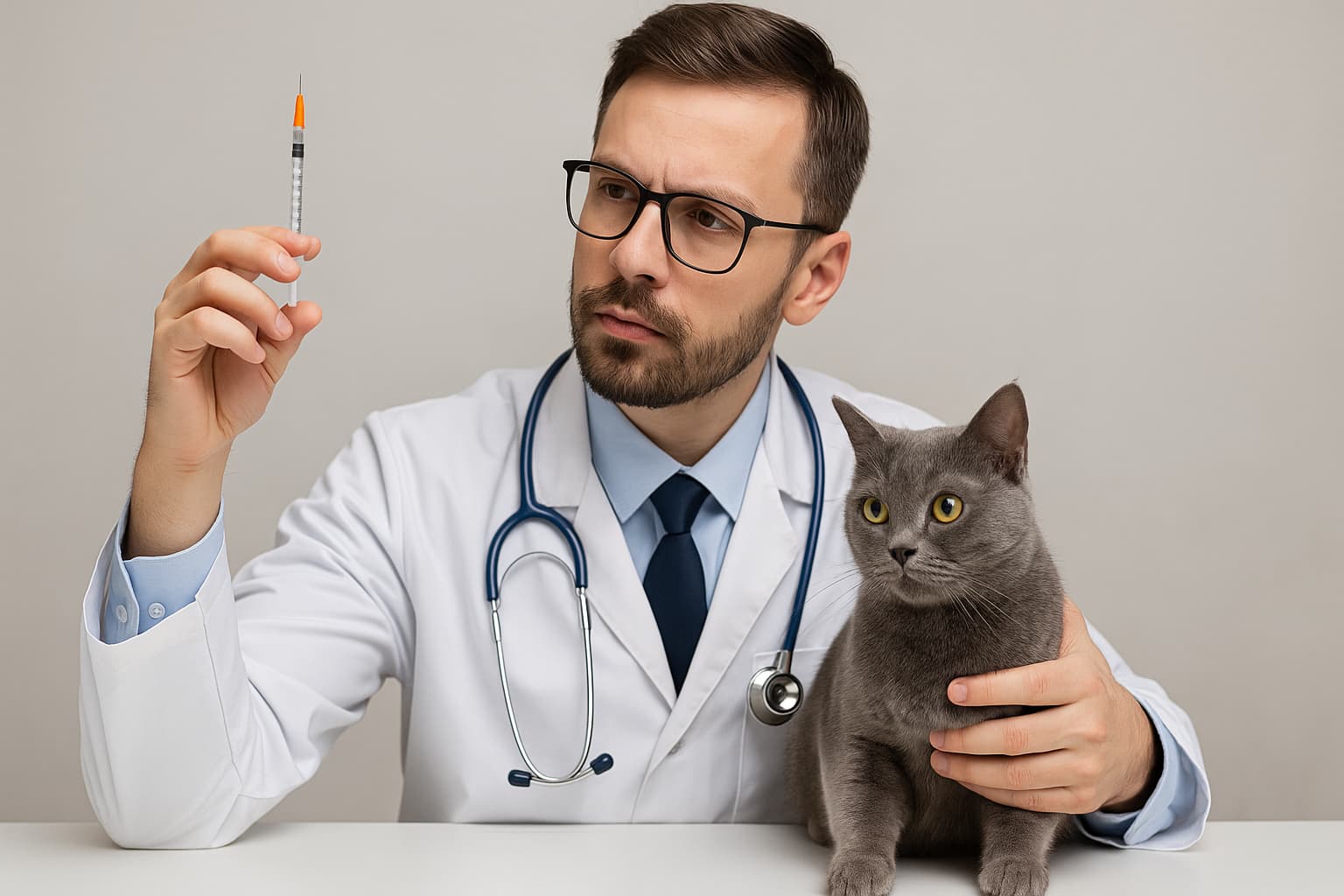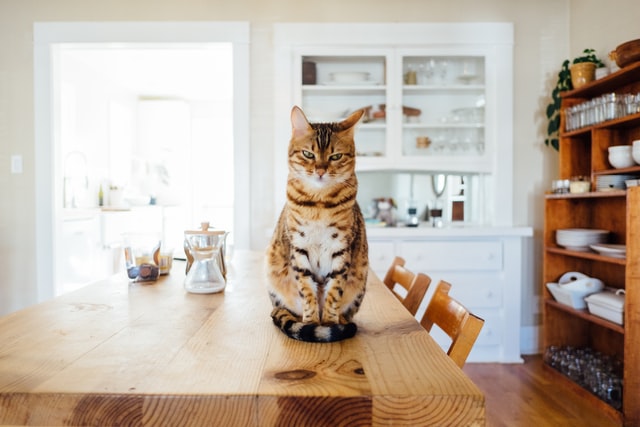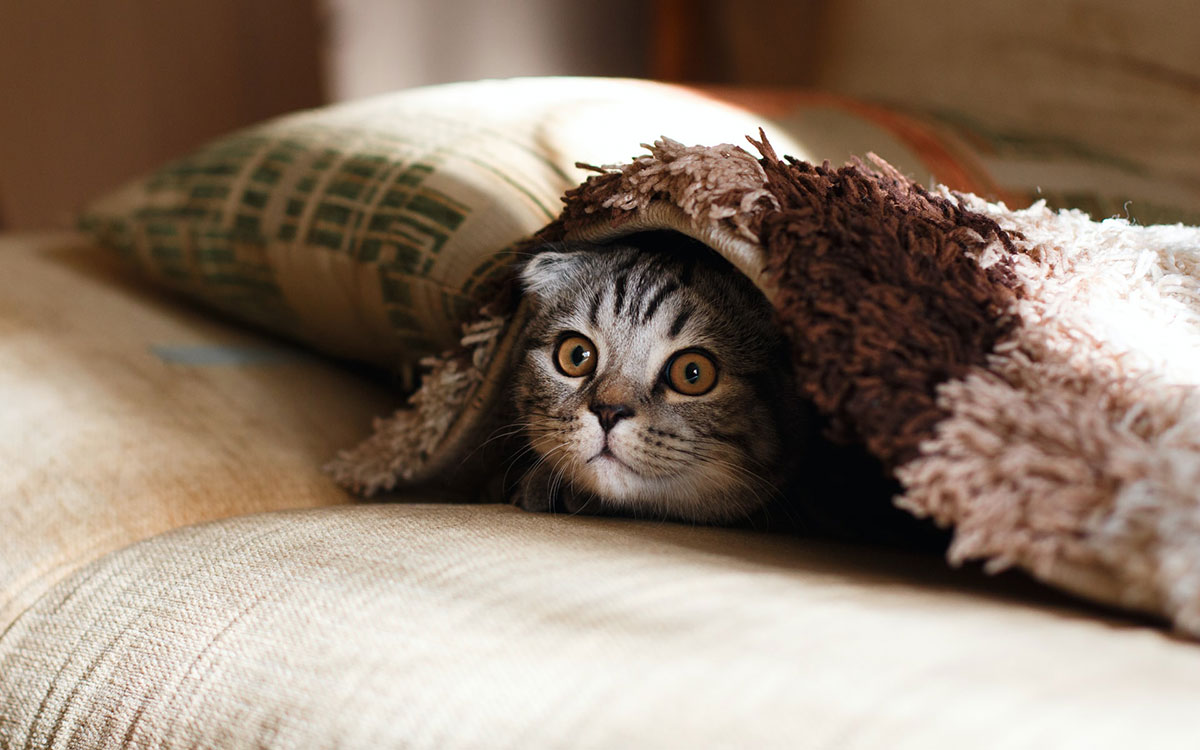Cats with diabetes need insulin to control blood sugar levels. The maximum insulin dose for cats varies depending on several factors.
Understanding these factors is crucial for your cat’s health and well-being. Diabetes in cats is a common issue, affecting many feline companions. Managing it involves careful monitoring and precise insulin dosing. The correct insulin dose ensures your cat’s blood sugar remains stable, avoiding health complications.
Every cat is unique, and its insulin needs can differ. Factors like weight, age, and the severity of diabetes play a role. Consulting a veterinarian is essential to determining the correct dosage. This blog will explore finding the correct insulin dose for your cat, ensuring its health and happiness. With the proper guidance, your cat can live a healthy and comfortable life despite diabetes.
Introduction To Insulin Therapy For Cats
Insulin helps control blood sugar levels in cats. Cats with diabetes need insulin to stay healthy. Insulin acts as a helper. It moves sugar from the blood to cells, which use sugar for energy. Without insulin, sugar stays in the blood, making the cat feel sick. Giving insulin daily helps the cat feel better and can prevent many health problems. The right dose is important. Too much insulin can be harmful.
Finding the correct insulin dose can be hard. Cats react differently to insulin. Some need more, others need less. Owners must watch their cats closely. Signs of low sugar include weakness and shaking. Cats might also act confused. Owners should talk to the vet if they see these signs. Giving insulin at the same time each day helps. Cats should also eat regular meals. Consistent care keeps cats healthy and reduces risks.
Identifying Feline Diabetes Symptoms
Cats with diabetes often show unusual behavior. They might sleep more or seem tired. Changes in appetite can occur. Cats may eat more but still lose weight. Drinking more water is common. Look for frequent trips to the litter box. These are signs that need attention. Cats can also act restless or confused. It’s essential to observe these changes. Behavioral changes can indicate health issues.
Cats may look thinner even if they are eating well. Weight loss is a key sign. Look at their coat. It might seem dry or dull. Cats might groom less. That affects their fur condition. Check for skin and fur changes. Increased urination is another sign. Cats may have accidents outside the litter box. Notice any unusual smells. A sweet-smelling breath can signal diabetes. These physical signs are crucial for early detection.
Determining The Right Insulin Dose
Setting the initial insulin dose for cats is very important. Most vets start with low doses, which help avoid any side effects. A common starting point is 0.25 to 0.5 units per kilogram, often given twice daily. Monitoring the cat’s response is key, and adjustments are made based on this. Regular check-ups are essential.
According to the Merck Veterinary Manual, insulin treatment in cats usually begins at 0.25–0.5 units/kg every 12 hours, with adjustments made based on glucose monitoring and response.
👉 Merck Vet Manual – Diabetes Mellitus in Cats
Many factors affect the insulin dose for cats. A cat’s weight plays a significant role. Lighter cats need less insulin. The cat’s diet also matters. High-carb diets may need more insulin. Activity level influences dosage, too. Active cats might require different amounts. Age and health conditions are considered as well. Older cats may have different needs. Vets consider all these factors when deciding doses.

Monitoring Blood Glucose Levels
Regular testing is crucial for cats with insulin needs. It helps keep track of their blood glucose levels, ensuring they get the correct insulin dose. Testing prevents hypoglycemia, a drop in blood sugar, and hyperglycemia, where blood sugar is too high. Both conditions can be harmful. Owners should learn how to test blood at home. This will help quickly detect any issues.
A study by Zeugswetter et al. (2010) demonstrated that home glucose monitoring with glucometers improves diabetic control and quality of life in cats.
👉 Zeugswetter et al., JFMS Study – PubMed
Several tools help measure blood sugar in cats. A glucometer is a common choice. It measures blood sugar from a small sample. Test strips are used with glucometers. They are easy to use. Owners should have a lancing device. It helps to collect a blood sample. These tools ensure accurate readings and help adjust the insulin dose. Regular use of these tools is important.
Adjusting Insulin Dosage Safely
Cats can show signs if they have too much insulin. They may seem very weak or tired. Some might shake or twitch. Others could have trouble walking. Watch for changes in appetite. They might eat less or more. If a cat vomits often, it could be a sign. Always watch their behavior closely. Quick action can help them feel better.
The American Animal Hospital Association (AAHA) recommends adjusting feline insulin dosage based on curve testing, clinical signs, and daily glucose logs.
👉 AAHA Diabetes Management Guidelines
Check your cat’s blood sugar often. Use a simple meter to do this. Write down the numbers each time. Talk to your vet regularly. They know the best dose. Slowly change the insulin dose if needed. Do not make significant changes fast. Always keep your cat’s diet the same. This helps in managing their sugar levels. A consistent routine is key.
Diet And Lifestyle Considerations
Cats need a special diet to manage their insulin levels. Foods high in protein and low in carbohydrates help keep blood sugar stable. Feeding your cat the right food is vital. Avoid treats with high sugar content, which can lead to insulin spikes. Fresh water should always be available. Cats need to stay hydrated.
A clinical trial by Roomp & Rand (2009) confirmed that a high-protein, low-carb diet combined with insulin therapy significantly increases remission rates in diabetic cats.
👉 Roomp & Rand, JFMS Study
Exercise helps cats use insulin better. Playtime is important. It keeps them active and healthy. Toys that make cats chase or jump are good. Regular play reduces stress levels, which can also impact insulin needs. Even short play sessions help. Aim for at least 15 minutes a day. This keeps their bodies strong and balanced.
Consulting With A Veterinarian
Cats need special care when they have diabetes. Call the vet if your cat seems weak or sleeps too much. Sudden weight loss is also a sign. Eating but losing weight is not normal. Quick attention is essential. Veterinarians can help your cat feel better. They know what to do. Cats cannot tell us they are sick, so we must watch them closely.
What is the correct insulin dose for my cat? Is my cat’s diet okay? Can my cat exercise safely? How often should I check blood sugar levels? What are the signs of too much insulin? Why is my cat losing weight? Is there a better treatment? Can stress affect my cat’s health? How can I help my cat at home? Make a list of questions. Bring the list to your vet visit.

Preventing Complications
Cats can show signs of too much insulin. Watch for unusual behaviors. If your cat seems more tired, this can be a warning. Shaking or trembling is also a sign to notice. Increased hunger or thirst is essential too. If your cat feels weak or wobbly, it could mean too much insulin. Fast breathing is another sign. Always keep an eye on your cat’s health. Early signs help prevent serious problems.
O’Neill et al. (2016) found that cats under regular veterinary supervision have significantly improved survival outcomes when managing chronic diseases like diabetes.
👉 O’Neill DG et al., Vet Record Study
Managing your cat’s insulin is essential. Regular vet visits help keep track. Keep a daily log of your cat’s behavior. Note any changes you see. This allows the vet to make better decisions. A balanced diet is key to health. Follow vet advice on feeding. Keep your cat active with play. Exercise helps maintain a healthy weight. Understand your cat’s needs for long-term health. Consistency is vital for managing their condition.
Conclusion And Future Outlook
Summary of Key Points: Cats need insulin to manage diabetes. The dose varies for each cat, and vets decide on the best dose. Too much insulin can be harmful. Regular checks are important. Owners should monitor their cats closely, and blood sugar levels need to be tracked.
Emerging Treatments and Research: New treatments are being studied. Scientists are finding better ways to give insulin. Research is exploring alternatives to injections. New drugs may help cats manage diabetes better. Understanding feline diabetes is improving. This can lead to better care. The future looks promising for diabetic cats.
Frequently Asked Questions
What Is The Maximum Insulin Dose For Cats?
The maximum insulin dose for cats varies based on individual needs. Typically, doses range between 0.25 and 2 units per kilogram. It’s essential to consult a veterinarian to determine the correct dosage. Overdosing can lead to hypoglycemia, which is dangerous for cats.
How Often Should Cats Receive Insulin?
Cats usually require insulin twice daily to manage diabetes effectively. This routine helps stabilize their blood sugar levels. Regular monitoring and vet consultations are crucial. Adjustments may be necessary based on the cat’s response and health status.
Can an Insulin Overdose Harm Cats?
Yes, insulin overdose can be harmful and potentially fatal for cats. An overdose may cause hypoglycemia, leading to symptoms like lethargy or seizures. Immediate veterinary attention is necessary. Always follow the prescribed dosage and monitor your cat’s health closely.
What Factors Affect Insulin Dosage In Cats?
Several factors influence insulin dosage in cats. These include weight, age, and overall health. Dietary habits and activity levels also play a role. Regular vet check-ups are vital to assess and adjust the dosage accordingly.
Conclusion
Caring for a diabetic cat involves understanding insulin doses. Always consult your vet for guidance. They know your cat’s unique needs. Monitor your cat’s behavior and health closely—changes in appetite or energy matter. Regular vet visits ensure proper dosage adjustments.
Consistent communication with your vet is key. This partnership helps manage your cat’s diabetes effectively. Remember, patience and attention are vital. Your cat depends on your care. With the right approach, your cat can lead a happy life.
References
- Merck Veterinary Manual. Diabetes Mellitus in Cats. MerckVetManual.com
- Zeugswetter F et al. The effect of home glucose monitoring on diabetic control in cats. JFMS. PubMed
- Roomp K, Rand J. Glargine insulin and low-carb diets in feline diabetes management. JFMS. PubMed
- AAHA Diabetes Management Guidelines. aaha.org
- O’Neill DG, Church DB, McGreevy PD, Thomson PC, Brodbelt DC. Longevity and mortality of cats in primary care. Vet Rec. PubMed
🩺 Reviewed by Dr. Audrey Cook, BVM&S, DACVIM-SAIM, DECVIM-CA
Professor of Small Animal Internal Medicine
Texas A&M University, College of Veterinary Medicine
Dr. Audrey Cook is a globally respected expert in veterinary endocrinology. She specializes in feline diabetes and chronic care for small animals. Her insights have guided veterinary protocols across clinics and universities worldwide.






